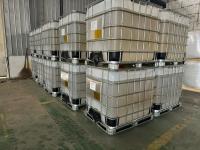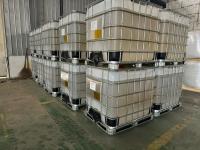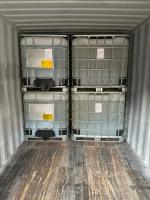Our Products
Product Center / polyamine of AB9036 AB9037 AB9038 AB9042 can be replaced By chinafloc-polyamine

Polyamine is a cationic organic polymer widely used as a primary coagulant and charge neutralizer in various industrial and municipal water treatment processes. It is usually a water-soluble polymer formed by the condensation of epichlorohydrin and dimethylamine or other amine-containing compounds. Due to its moderate to high cationic charge density, strong flocculation ability, and excellent water solubility, polyamine is a preferred alternative to inorganic coagulants like alum or ferric chloride in modern water treatment systems. Its versatility allows it to be applied in drinking water treatment, industrial wastewater treatment, mining, paper production, and oilfield operations.
1. Municipal and Industrial Wastewater Treatment
The most common and important application of polyamine is in municipal and industrial wastewater treatment as a primary coagulant and coagulant aid. In wastewater, fine suspended particles, colloids, and organic materials are often negatively charged, which prevents them from settling. The cationic charges on polyamine neutralize these particles, eliminating their electrostatic repulsion and allowing them to aggregate into larger flocs that can settle or be filtered out.
In municipal wastewater treatment, polyamine is applied in several stages:
-
Primary clarification: It enhances the sedimentation of suspended solids, improving effluent clarity and reducing the organic load entering biological treatment units.
-
Secondary clarification: It aids in improving the settleability of biological flocs, especially when sludge bulking or foaming occurs.
-
Sludge dewatering: Polyamine helps to condition sludge before mechanical dewatering by increasing water release and producing drier sludge cakes.
For industrial wastewater, polyamine provides efficient removal of turbidity, color, and organic pollutants in effluents from textile dyeing, papermaking, petrochemical processing, tanneries, food processing, and metal plating industries. Its fast-acting coagulation behavior helps achieve higher throughput and improved treated water quality compared to traditional inorganic salts.
Polyamine is particularly suitable for recycling water systems, where it improves solid-liquid separation and allows reuse of treated water, reducing both costs and environmental impact.
2. Drinking Water Treatment
Polyamine is also approved and widely used in drinking water treatment, often as an alternative or complement to alum or polyaluminum chloride (PAC). In potable water treatment, its role is to remove suspended solids, color, organic matter, and algae, thereby improving turbidity and reducing disinfection by-product formation.
Because of its low dosage requirement, non-toxicity, and low residual aluminum or metal content, polyamine is preferred in plants where finished water quality is strictly regulated.
Key benefits in drinking water treatment include:
-
Rapid coagulation and flocculation: Produces large, dense, and fast-settling flocs.
-
Reduced sludge volume: Polyamine produces less sludge compared to alum or ferric chloride, minimizing waste handling.
-
Broader pH range: Effective between pH 4–9, which gives flexibility in process control.
-
Lower residuals: Does not contribute to high sulfate or chloride concentrations in treated water.
Polyamine also improves filter performance and lifespan, as it generates stronger and more compact flocs that minimize filter clogging. It is often used together with anionic polyacrylamide flocculants to maximize water clarity and minimize chemical usage.
3. Sludge Conditioning and Dewatering
Sludge generated during wastewater treatment requires dewatering before disposal or incineration. Polyamine is an excellent sludge conditioner, as it bridges fine particles and releases bound water within the sludge matrix. It is typically used in combination with cationic polyacrylamides to improve mechanical dewatering efficiency in centrifuges, belt filter presses, and chamber presses.
The benefits of using polyamine for sludge dewatering include:
-
Improved floc structure and faster drainage.
-
Higher cake solids content, resulting in less sludge volume.
-
Lower energy and transportation costs due to reduced moisture.
-
Enhanced performance of downstream flocculants by charge balancing.
By conditioning sludge with polyamine, treatment plants can achieve significant operational savings and more stable dewatering performance even under fluctuating influent characteristics.
4. Color and Organic Removal in Textile and Dyeing Wastewater
Polyamine is widely recognized for its excellent color removal capability, especially for reactive, acid, and direct dyes in textile wastewater. Dyes are typically anionic and highly soluble, making them difficult to remove using traditional methods. The strong cationic charge of polyamine interacts with the negatively charged dye molecules, forming insoluble complexes that settle rapidly.
Advantages of polyamine in textile wastewater treatment include:
-
High color removal efficiency (>90%) at low dosage.
-
Effective over a wide pH range.
-
Lower sludge generation compared to alum or ferric coagulants.
-
Improved biodegradability of the treated effluent.
Polyamine can also be combined with inorganic coagulants (like PAC) or anionic flocculants to enhance both color and turbidity removal. This makes it ideal for zero-liquid-discharge (ZLD) textile plants aiming to recycle treated effluent.
5. Paper and Pulp Industry
In the paper industry, polyamine plays several critical roles in improving papermaking efficiency and product quality. It is primarily used as a retention aid, charge neutralizer, and pitch control agent. The polymer neutralizes anionic trash—such as lignin, hemicellulose, and fines—that interfere with papermaking chemistry.
Key applications include:
-
Retention and drainage aid: Improves retention of fines, fillers, and sizing agents, and accelerates water drainage from paper pulp.
-
Pitch and stickies control: Binds resinous and tacky materials, preventing their deposition on paper machines.
-
Wet-end system stabilization: Maintains charge balance and reduces foaming.
-
Micro-particle system support: Enhances performance of bentonite or colloidal silica systems when used in combination.
Polyamine enhances paper formation, increases machine runnability, and leads to cleaner white water loops, all of which reduce chemical consumption and downtime.
6. Mining and Mineral Processing
Polyamine is employed in mineral processing for solid-liquid separation, clarification, and tailings treatment. Fine mineral suspensions—such as those in coal washing, phosphate beneficiation, bauxite refining, and metal ore processing—contain negatively charged particles that are difficult to settle.
Polyamine neutralizes these charges and forms large, dense flocs that settle faster, allowing clearer overflow and easier recovery of process water. It is used in:
-
Thickening circuits to increase solids concentration in tailings.
-
Clarification of mine water for reuse.
-
Filtration aids to improve solid capture and cake formation.
In bauxite and alumina refineries, polyamine improves red mud settling and reduces caustic soda loss by promoting efficient solid-liquid separation.
7. Oilfield and Petrochemical Applications
In oilfield water treatment, polyamine is used to treat produced water, oil–water separation, and refinery effluents. Produced water typically contains fine oil droplets, solids, and organic materials that are negatively charged. Polyamine neutralizes these charges and forms larger, more stable flocs that separate easily under gravity or flotation.
Applications include:
-
Produced water clarification in onshore and offshore platforms.
-
Demulsification of oil-water emulsions.
-
Pretreatment before filtration or reinjection.
In dissolved air flotation (DAF) systems, polyamine enhances air-bubble attachment to oil droplets, improving flotation efficiency. Its excellent salt tolerance and thermal stability make it suitable for harsh field conditions, including high temperature and salinity environments.
8. Sugar Industry and Food Processing
In the sugar industry, polyamine is used for juice clarification and syrup purification. The cationic polymer binds negatively charged impurities, suspended solids, and color bodies in raw cane or beet juice, producing a cleaner product and reducing color formation during crystallization.
In food and beverage wastewater, polyamine aids in the removal of fats, oils, and organic matter. It helps reduce biological oxygen demand (BOD) and chemical oxygen demand (COD), improving treatment efficiency and compliance with discharge regulations.
9. Electronics and Ultrapure Water Treatment
High-purity grades of polyamine are applied in electronics manufacturing and semiconductor wastewater treatment, where removal of submicron particles and dissolved organics is critical. The polymer’s strong cationic charge and low residual impurity content ensure effective contaminant removal without introducing metallic impurities.
10. Key Advantages of Polyamine
-
High charge density: Excellent for charge neutralization and coagulation.
-
Fast floc formation: Provides immediate results in solid-liquid separation.
-
Low sludge yield: Produces less sludge than metal-based coagulants.
-
Wide pH range: Effective across various pH conditions (4–9).
-
Compatibility: Works well with inorganic coagulants and flocculants.
-
Eco-friendly: Low toxicity and biodegradable in the environment.
-
Thermal and salt stability: Effective in high-salinity and high-temperature systems.
| AB 9036 | Coagulation & Flocculation | 10mg/L |
| AB 9037 | Coagulation & Flocculation | 10mg/L |
| AB 9038 | Coagulation & Flocculation | 10mg/L |
| AB 9042 | Coagulation & Flocculation | 10mg/L |
| AB 9306 | Coagulation & Flocculation | 10mg/L |
| AB 9307 | Coagulation & Flocculation | 10mg/L |
| AB 9309 | Coagulation & Flocculation | 10mg/L |
| AB 9312 | Coagulation & Flocculation | 10mg/L |
| AB 9318 | Coagulation & Flocculation | 10mg/L |
| AB 9406 | Coagulation & Flocculation | 10mg/L |
| AB 9407 | Coagulation & Flocculation | 10mg/L |
| AB 9412 |



265_small.jpg)

